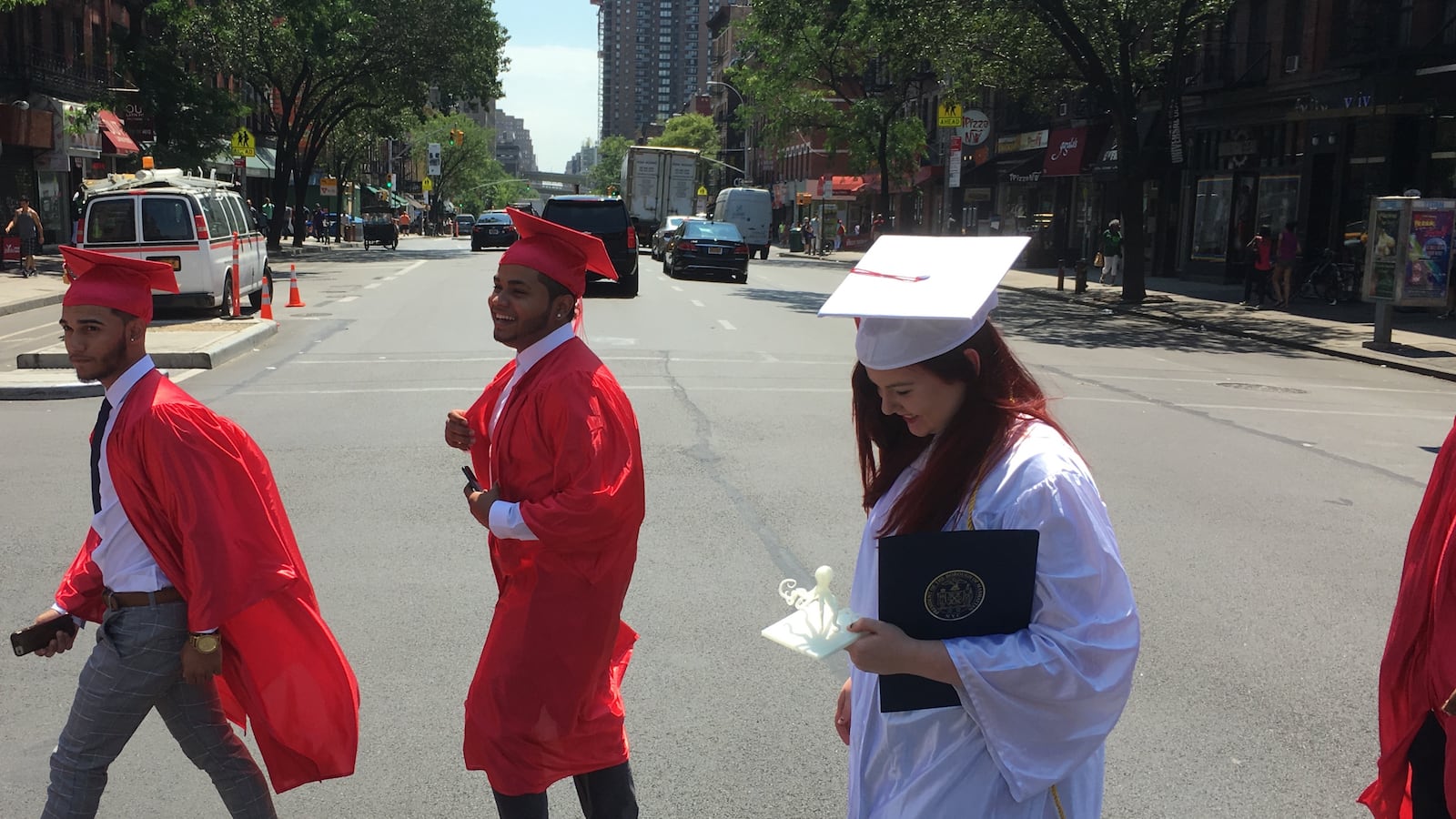Nearly 60 percent of New York City students who graduated high school last year continued their education after they left, continuing an upward trend, according to a trove of new performance data released Monday by the education department.
Among students who began high school in 2014, 59 percent enrolled in college, vocational programs, or “public service” programs including the military — an increase of two percentage points compared with the previous year.
“Today we celebrate our record college enrollment — a direct result of the hard work of our students, educators and families — and pledge to continue our gains,” schools Chancellor Richard Carranza said in a statement.
Officials also touted a boost in college readiness — a metric that measures whether students would have to take remedial classes at CUNY — though roughly half of students still do not reach that bar. Fifty-one percent of students were considered college ready, an increase of three percentage points compared with the previous year.
The education department acknowledged that some of those gains came from CUNY changing its standards for what counts as “college ready,” including removing a requirement that students take advanced math in high school. City officials said there still would have been a two percentage point jump regardless of the new standards.
Those college readiness statistics are included on the city’s school-quality reports, which were also posted online Monday. Schools receive a quality “snapshot” and “guide” — each with varying levels of detail — that include results from surveys and school observations alongside graduation rates, test scores, and demographic data.
[Find your school’s quality report here]
Under Mayor Bill de Blasio, the education department scrapped the A-F letter grades that were once assigned to schools during the Bloomberg administration, and which were criticized for focusing too heavily on progress on state tests and other metrics. (Research has found the letter grade system helped spark improvements in student performance and even reduced teacher turnover.)
Instead, former Chancellor Carmen Fariña developed a new “Framework for Great Schools” that includes measures of trust, collaboration between educators, and quality of instruction in addition to student performance. The current reports continue to reflect Fariña’s philosophy of cooperation as a driver of school change instead of competition and consequences. The quality reports released on Monday include much of the same data as those under Bloomberg, but they do not feature an overall school rating.
As in previous years, the quality reports are generous: Just 11 high schools were labeled as “not meeting” their student performance goals, though another 168 fell short and were considered “approaching” their goals. Only eight did not meet their targets for “rigorous instruction.” (The reports include 489 high schools.)
The two different quality reports each school receives also convey information that sometimes appears to be in tension with each other. Manhattan’s P.S. 149, for instance, is listed as one of the city’s lowest performing schools, according to the more-detailed School Quality Guide (it is also in the mayor’s Renewal turnaround program for struggling schools). But on its more parent-friendly Quality Snapshot, student achievement is listed as “fair,” a step up from “needs improvement.”
Asked about the apparent differences between reports, education department officials pointed to a technical “educator guide” and said the criteria used to measure student achievement are “reported consistently across the Dashboard, Snapshot, and Guide.”

